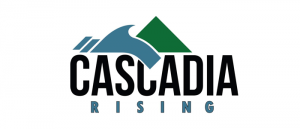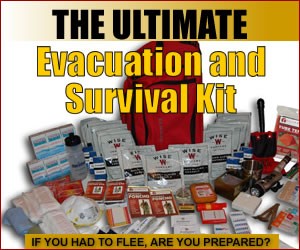
The structure of the Cascadia subduction zone.
by Kelly
If you live in the Pacific Northwest or have friends or family there, I encourage you to read and share Kathryn Schulz’s chilling New Yorker feature that
looks at the inevitable seismic disaster building day by day in the
region. Kenneth Murphy, the director of the division of the Federal
Emergency Management Agency that’s responsible for Alaska, Idaho, Oregon
and Washington told the New Yorker that the odds of such an earthquake
striking the Northwest in the next 50 years are estimated to be, “One in
three. Our operating assumption is that everything west of Interstate 5
will be toast.”
The problem lies roughly 80 miles off the coast of Oregon and it’s called the Cascadia subduction zone, where a pair of tectonic plates are now grinding up against one another under the Pacific Ocean, and they’re headed — slowly but inevitably — toward a moment when the pressure now building there will become too great to bear.Strain is growing along the Cascadia fault beneath the seabed offshore and, as seismologist Chris Goldfinger told Schulz, “The gap between what we know and what we should do about it is getting bigger and bigger.”
When that happens, a huge tranche of the Pacific Northwest will be deluged and destroyed.
What do scientists think will happen?
- A massive earthquake will lay waste to thousands of homes and buildings, devastate the power grid and energy infrastructure, and even do things like causing the edge of the continent to drop by as much as 30 feet and liquefy solid ground.
- A mega-tsunami will arrive onshore across the Northwestern coast within 15 minutes of the earthquake’s strike, creating a “700-mile-long liquid wall” that would render the region “unrecognizable.”
- The deaths of 13,000 people, or perhaps many more, as well as more than 1 million left homeless, and the need to provide food and water for more than 2 million for perhaps months to come.
Scientific evidence indicates that a magnitude 8.0-9.0 earthquake occurs along the 800-mile long CSZ fault on average once every 200 to 500 years. The last major earthquake and tsunami along the fault occurred over 300 years ago in 1700.
Recent subduction zone earthquakes around the world underscore the catastrophic impacts we will face when the next CSZ earthquake and tsunami occurs in our region:
Recent Subduction Zone Earthquakes:
- Indonesia (2004): M9.1 — 228,000 fatalities
- Chile (2010): M8.8 — 500 fatalities
- Japan (2011): M9.0 — 18,000 fatalities
“The scenario left an impression of much greater devastation that is anticipated to occur, however. Communications may black out, transportation may grind to a halt, stores conceivably could run out of goods for a while, but that doesn’t constitute “toast” in one’s mind. The speaker must have been referring to some aspect of those problems, not to smoking rubble.”
However, conducting successful life-saving and life-sustaining response operations in the aftermath of a Cascadia Subduction Zone disaster will hinge on the effective coordination and integration of governments at all levels – cities, counties, state agencies, federal officials, the military, tribal nations – as well as non-government organizations and the private sector.
 That’s why FEMA is holding Cascade Rising.
One of the primary goals of Cascadia Rising is to train and test this
whole community approach to complex disaster operations together as a
joint team.
That’s why FEMA is holding Cascade Rising.
One of the primary goals of Cascadia Rising is to train and test this
whole community approach to complex disaster operations together as a
joint team.The culminating event will be a four-day functional exercise to occur June 7-10, 2016. Emergency Operations and Coordination Centers (EOC/ECCs) at all levels of government and the private sector will activate to coordinate simulated field response operations both within their jurisdictions and also with neighboring communities, state EOCs, FEMA, and major military commands.
The Squirrel says: If you live in the zone and don’t want to leave your safety to FEMA here are a few tips. Have your car permanently ready and parked in
 the
direction you would travel to go East as fast as possible. Work out an
efficient route that takes into consideration the mass rush for the
interstates. Watch the birds and animals. They react before the tremors
are felt. If it’s suddenly quiet, grab your family, get in your car and
go. DO NOT DELAY. So what if you were wrong? It’s a rehearsal for the
real thing.
the
direction you would travel to go East as fast as possible. Work out an
efficient route that takes into consideration the mass rush for the
interstates. Watch the birds and animals. They react before the tremors
are felt. If it’s suddenly quiet, grab your family, get in your car and
go. DO NOT DELAY. So what if you were wrong? It’s a rehearsal for the
real thing.Have an evacuation kit ready in your vehicle and have a plan of action for where you will go. Have cash in your Evac bag as ATM and gas machines are going to fail for lack of power. Have food and clean water. Be prepared to use your vehicle as a home base.
No comments:
Post a Comment